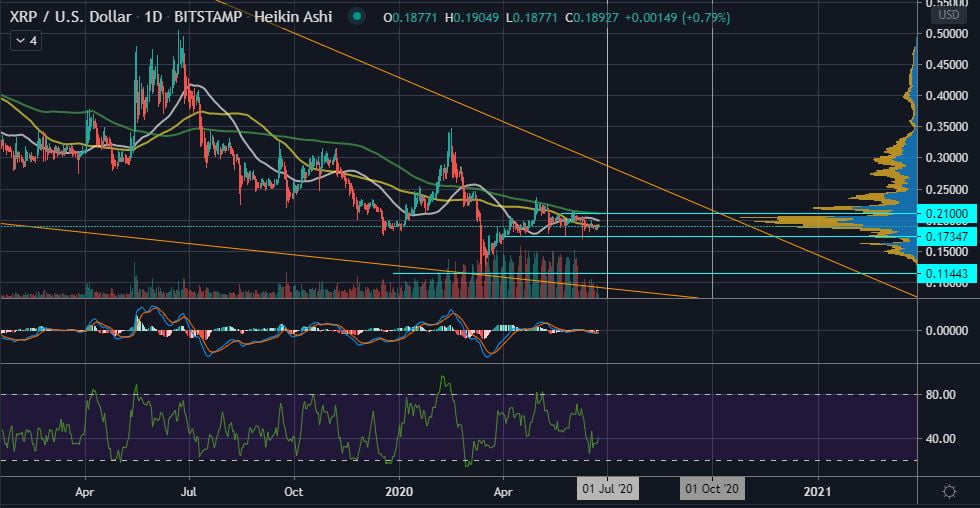In brief:
- XRP has been in a phase of consolidation since early April 2020.
- In the same time period, $0.18 – $0.17 has proven as a strong support zone for XRP.
- XRP has been on a falling wedge pattern since September 2018.
- The wedge could resolve in the third quarter of 2020.
For the major part of the second quarter of 2020, XRP has been in a phase of consolidation with many traders and investors turning their attention to Bitcoin (BTC), Ethereum (ETH) and even Stellar (XLM). XRP is yet to recover fully from the Coronavirus crash of mid-March that saw it drop from around $0.25 to $0.10 levels. At the time of writing this, XRP is trading at $0.188 and this phase of consolidation might continue for the better part of Q3 2020 as shall be explained.
XRP has Been in a Falling Wedge Since September 2018
A few weeks back, popular Bitcoin and crypto analyst, MagicPoopCannon had postulated the idea that XRP had probably bottomed and was in a falling wedge since September 2018. Magic had then predicted that if the wedge were to break out to the upside, XRP could go as high as $0.77. Below is a screenshot of Magic’s analysis in mid-May.
The Falling Wedge Could Resolve in Q3 2020
Further recreating Magic’s falling wedge, it can be observed that XRP has two strong support zones: $0.18 – $0.17 and $0.11 – $0.10. If this area of $0.18 – $0.17 is held by XRP, the remittance coin could be in a position to break out of the fall ing wedge sometime in Q3 of 2020 or early Q4. The worst-case scenario would be for the wedge to resolve in mid-November.
Therefore, investors and traders should be on the lookout for a clean break above the current resistance at around $0.21.
The PayID Factor for XRP
Last week, Ripple announced that it was joining the Open Payments Coalition to further boost interoperability between payment networks. In a short Twitter thread, the CTO of Ripple, David Schwartz explained the potential benefits of a simple payment ID on multiple platforms.
PayID can do so many things, a thread:
A) PayID provides human-readable payment addresses for cryptocurrency payment systems.
B) PayID provides a single destination address for multiple cryptocurrency and fiat payment systems.
C) PayID gives cryptocurrency companies a way to meet regulatory requirements such as the travel rule.
D) PayID can provide cryptographic proof that payment was delivered to the correct destination.
This in turn means that Pay ID will remove the complex barriers such as crypto addresses, that have hindered adoption by being a bit complicated for potential users. If crypto payments can be simplified to a level similar to sending an email, crypto adoption will grow and so shall XRP.
Conclusion
XRP has been in a falling wedge since September 2018. The remittance coin has been in a phase of consolidation since early April and the said wedge could resolve at some point in Q3 of 2020. Additionally, the introduction of PayID could boost crypto adoption further benefiting the usage of XRP and consequently its price.
As with all technical analyses of XRP, investors and traders are advised to use risk management techniques such as stop losses.
Disclaimer: This article is not meant to give financial advice. Any additional opinion herein is purely the author’s and does not represent the opinion of EWN or any of its other writers. Please carry out your own research before investing in any of the numerous cryptocurrencies available. Thank you.

